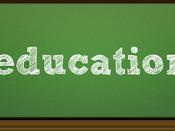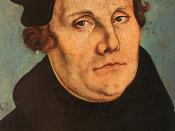As a result of the Protestant Revolution, many new expectations of society were formed. With the abolishment of celibacy, the family was placed at the center of human life, and a new stress put on mutual love between man and wife. Protestant educators taught the ideas of Renaissance humanists to a much wider audience, and many of the reformers attempted to eliminate many elements of popular culture.
Through the elimination of any idea of special holiness for celibacy, the family was placed at the center of life. Yet, even though mutual love was encouraged, women gained very little from what they previously had, as they were still expected to be completely obedient and loyal to their husbands while bearing children. Because monasticism had been destroyed, family life was the only destiny for the majority of the women. Both Lutherans and Calvinists strongly opposed allowing women to take active roles in religion, claiming that equality of the gospel did not overthrow the inequality of the sexes.
Overall, the Protestant Revolution did not noticeable transform womenÃÂs subordinate place in society.
Having a proper education was one of the main focuses during the Renaissance, and Protestants used that focus to provide educated Christians and citizens. Unlike humanist schools, however, Protestant schools sought to raise the number of semiliterate believers who could read the bible. Martin Luther advocated that all children should have the opportunity to an education provided by the state. LutherÃÂs coworker, Philip Melanchthon, shared his views and divided the students into three groups based on age or capability. Other Protestants followed this example and created a secondary school where the liberal arts were combined with religious instruction. Thus, the Genevian Academy came to concentrate on preparing ministers to spread Calvinism while being educated in Greek and Latin grammar and literature.


